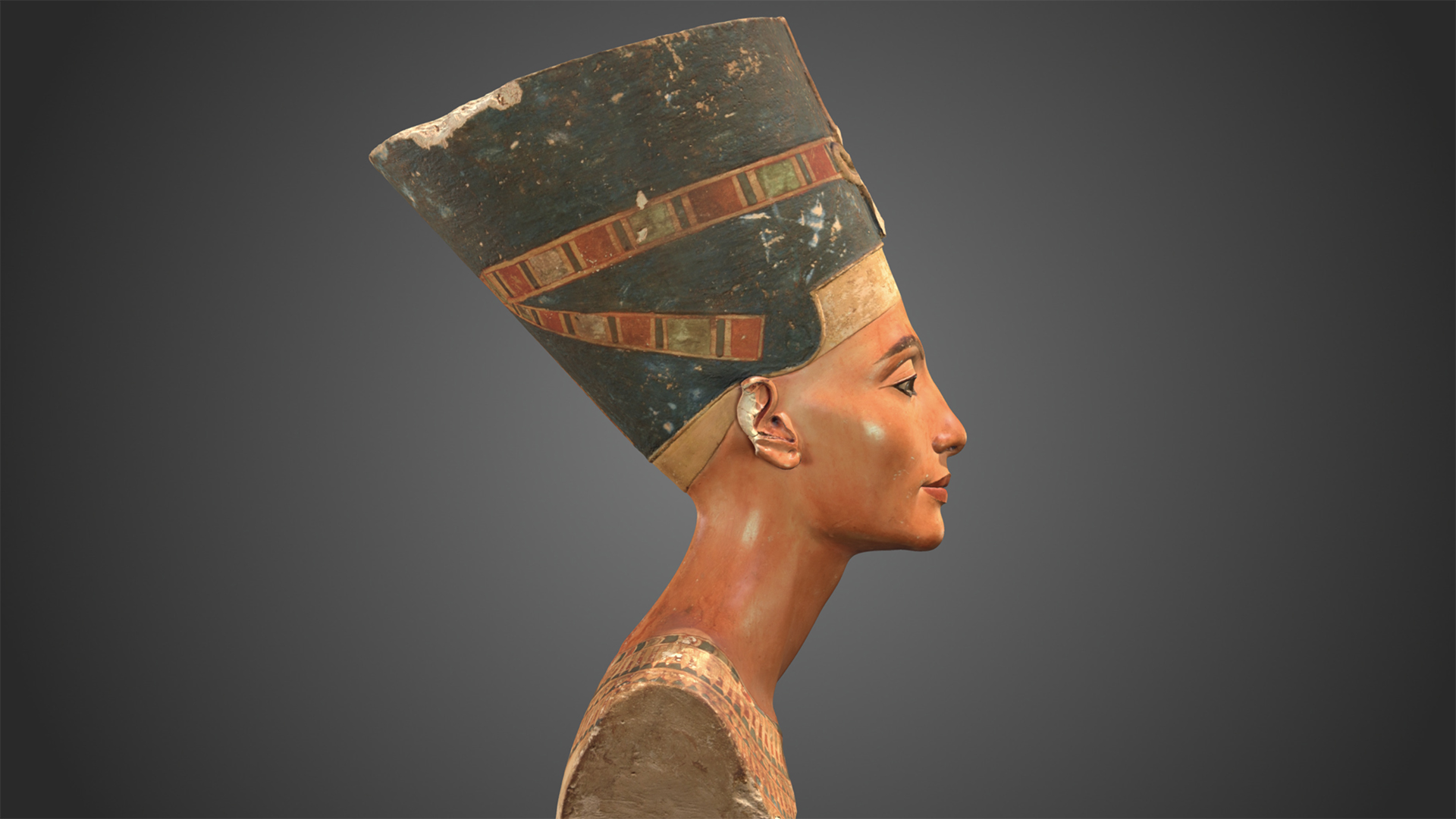Long-Hidden 3D Scan of Ancient Egyptian Nefertiti Bust Finally Revealed
Digital files of the bust were guarded almost as closely as the artifact itself.

When a German museum scanned a remarkable ancient Egyptian sculpture of the queen Nefertiti the digital files were guarded almost as closely as the iconic artifact itself.
However, the Egyptian Museum and Papyrus Collection in Berlin has finally released the 3D scan of the 3,000-year-old statue, after a 3-year campaign by digital multimedia artist Cosmo Wenman. Wenman then placed the files on Thingiverse, a site for viewing and printing 3D objects, Wenman wrote in a blog post.
The bust shows the striking face of Nefertiti; she lived from 1370 to 1336 B.C. and was the wife of Pharaoh Akhenaten. Carved in limestone by the court sculptor Thutmos in 1340 B.C., the bust shows the queen as "a grown woman with a harmonic and balanced beauty," according to a description on the museum's website.
Related: 7 Amazing Archaeological Discoveries from Egypt
Archaeologists unearthed the artifact in Amarna, Egypt, in 1912, and it has been in the collection of Berlin's Egyptian Museum since 1920. Museums often scan and 3D-model important objects to make them more accessible; unlike fragile artifacts, high-res models can safely and easily be manipulated in three dimensions, revealing their smallest details. The museum had done just such a 3D scan of the Nefertiti bust, Wenman discovered in 2016 — but getting permission to see it would prove to be complicated and time-consuming.
Beginning that year, Wenman doggedly pursued access to the Nefertiti files under Germany's freedom of information laws, which enable anyone to attain copies of official records (including digital media) that are created by federal agencies.
But the Prussian Cultural Heritage Foundation — the organization that oversees state museums in Berlin — initially denied Wenman's request. Representatives claimed that releasing the scan would interfere with the museum's sales of Nefertiti bust replicas in its gift shop, Wenman said. Eventually, the agency granted his request, sending him a USB drive with the files.
Get the world’s most fascinating discoveries delivered straight to your inbox.

What's more, the museum had virtually "stamped" the underside of the 3D model with a Creative Commons license, effectively making it free for anyone to copy, adapt or transform for noncommercial use, as long as the original source is acknowledged, Wenmain said in the blog post.
While Nefertiti's 3D scan has escaped from its digital limbo, other fine art masterpieces are not so lucky. Wenman is currently seeking access to 3D scans of Auguste Rodin's "The Thinker," which officials with the Rodin Museum in Paris are refusing to release, Wenman said in a statement.
On Thingiverse, the files are available for anyone to download and use for noncommercial purposes, under the Creative Commons license assigned to the scan by the museum, Wenman wrote.
- In Photos: Ancient Egyptian Tombs Decorated with Creatures
- Archaeologists Are Hot on the Trail of These 16 Spectacular Mysteries
- 24 Amazing Archaeological Discoveries
Originally published on Live Science.


Mindy Weisberger is a science journalist and author of "Rise of the Zombie Bugs: The Surprising Science of Parasitic Mind-Control" (Hopkins Press). She formerly edited for Scholastic and was a channel editor and senior writer for Live Science. She has reported on general science, covering climate change, paleontology, biology and space. Mindy studied film at Columbia University; prior to LS, she produced, wrote and directed media for the American Museum of Natural History in NYC. Her videos about dinosaurs, astrophysics, biodiversity and evolution appear in museums and science centers worldwide, earning awards such as the CINE Golden Eagle and the Communicator Award of Excellence. Her writing has also appeared in Scientific American, The Washington Post, How It Works Magazine and CNN.


